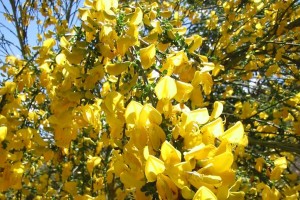Broom twig miner
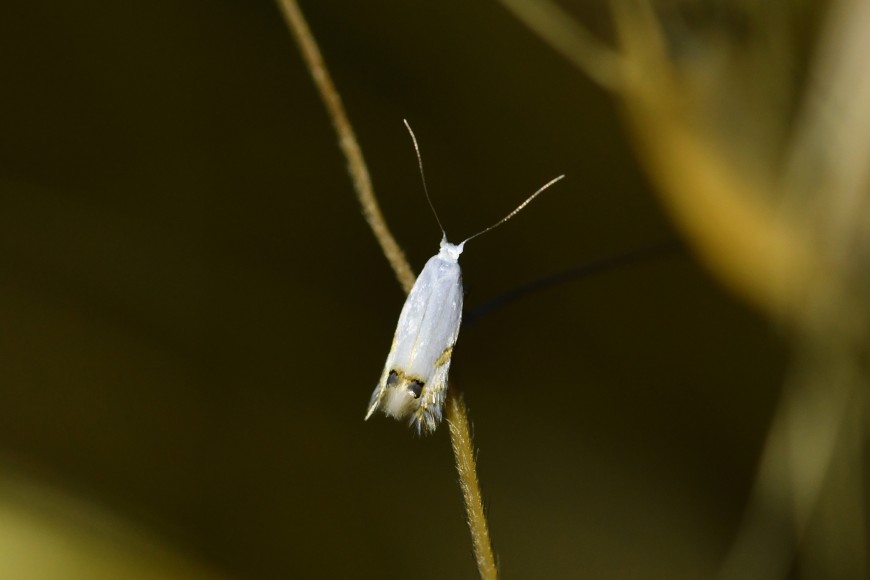
Image: broom twig miner (Leucoptera spartifoliella). Photo credit: © Christopher Stephens, license: (CC-BY-SA).
History in New Zealand
Broom twig miners are native to Europe. They were accidentally introduced to New Zealand - probably on ornamental broom plants. The moth was first recorded here in 1950 and it is now commonly found throughout the country.
How would I find/recognise it and what is its lifecycle?
You should be able to find evidence of the broom twig miner if you examine broom at any time of the year. In the summer you should see the tiny (3-4 mm) silvery-white moths flying about or sitting on broom plants. The moths lay white oval eggs on young broom stems, and you may just be able to see them with your naked eye.
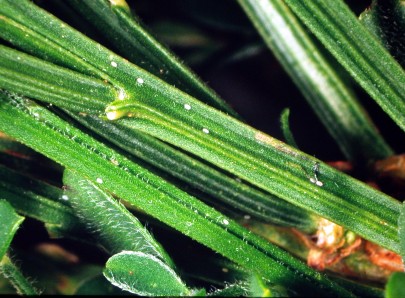
Image: broom twig miner eggs.
Larvae hatch in late summer or autumn and burrow into the broom stems. You will easily see the characteristic brown mines that form as a result of the larvae feeding under the surface of green stems. The larvae continue to feed and develop over the winter, so the mining becomes most obvious in late winter/early spring. To see the translucent larvae, you will need to peel back the bark covering the mines. You should be able to find old mines at any time of the year, even on dead twigs.
Around October the larvae emerge from the stems to pupate for about a month. They spin white cocoons, usually on the undersides of branches. The cocoons (either full or empty) are easy to find on heavily infested broom plants all year round.
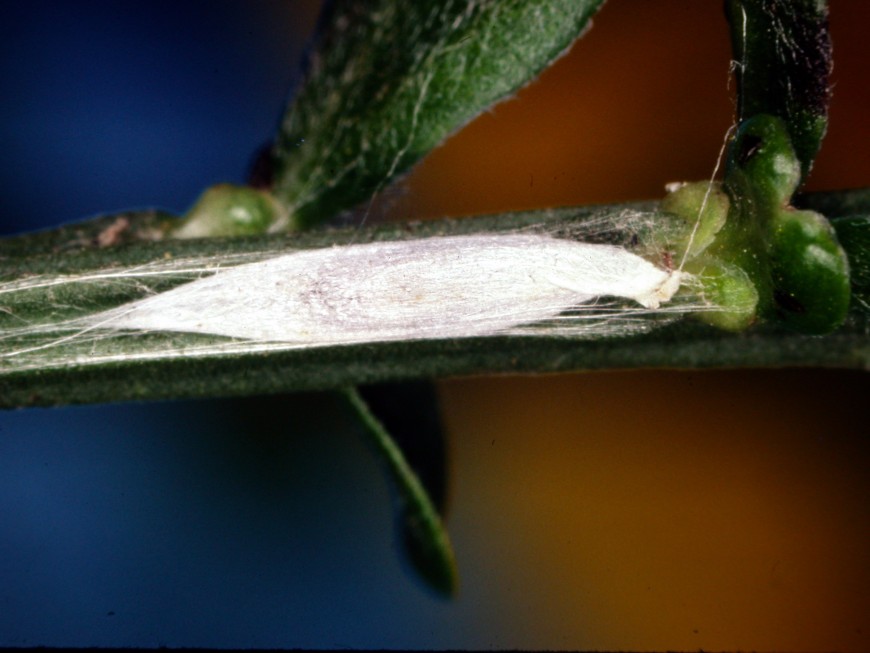
Image: broom twig miner cocoon.
The broom twig miner is easy to differentiate from other broom biocontrol agents. See Broom leaf beetle, Broom psyllids, Broom seed beetle.
How does it damage broom?
The larvae damage broom by feeding on the stem tissues. When a large proportion of green material has been affected, then complete branches and even whole bushes die.
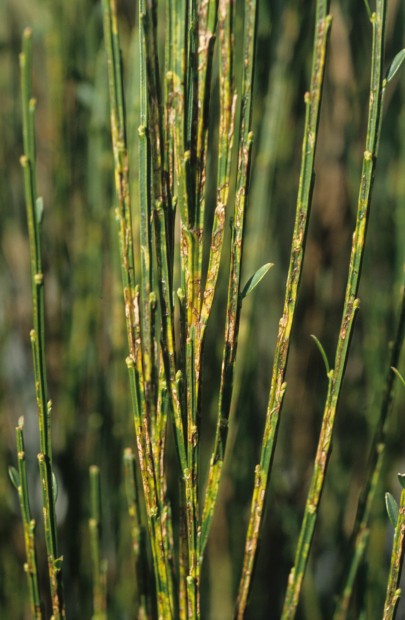
Image: broom twig miner damage.
Will it attack other plants?
No, broom twig miners will only damage Scotch broom (Cytisus scoparius). Even other species of broom are not attacked.
How effective is it?
In recent years some large outbreaks of broom twig miner have occurred, causing severe damage to broom infestations by reducing the growth and longevity of the broom plants. A study at Hanmer Springs showed that bushes infested with broom twig miner grew significantly less (3 cm) over a 2-month period than bushes that had been treated with insecticide to remove the twig miner (15 cm).
How can I get the most out of it?
Because broom twig miners are widely established, you do not need to do anything except avoid activities that will interfere with their life cycle. If you are undertaking control measures over a large area, then leave a few bushes nearby to act as a broom twig miner reservoir.
How do I select a release site?
Read Guidelines for selecting release sites for biocontrol agents.
How do I collect it for release at other sites?
If you do find pockets of broom that are not infested, then collect some broom from an infested area when it has fresh cocoons on it - this is usually about November. Wedge the infested broom material into the uninfested plants so that when the moths hatch, they can easily find their target.
How do I manage the release sites?
Avoid any activities that will interfere with the twig miners, such as herbicide application. If you need to undertake control measures, then avoid the release site.
Key contact


